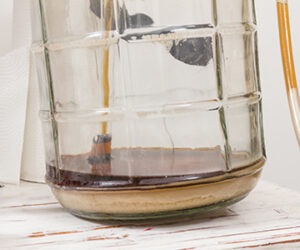Selecting Hops
Whether it’s a double IPA from which the hops literally jump from the glass to punch you in the mouth, or a stout where the hop characteristics are more subtle and used to balance the sweetness of roasted malts; choosing the right variety of hops is not a responsibility to be taken lightly.
Many factors must be considered when selecting the right hops to balance your homebrew. You must first understand the purpose each hop addition serves — whether it is to add bitterness for balance, to add aroma, or to flavor your beer. A misguided hop selection may clash with other ingredients in the beer such as spices, fruit, or even other hop additions. In order to select the appropriate hops for each recipe, it is important to understand the basic differences between varieties.
Hops are generally divided into two types: bittering and aroma. Some varieties, however, bring both to the glass. Hop cones contain little yellow sacs, or lupulin glands, that hold the bittering agents, called alpha acids, and aroma constituents that come from essential oils. Hops used for bittering generally have higher percentages of alpha acids. High alpha US varieties such as Simcoe®, Columbus, or Nugget, have anywhere from 10 to 18% alpha acids and are often used for adding bitterness to beer, (although Simcoe® and Columbus are sometimes used for aroma as well).
It is important to remember that the longer hops are boiled, the more bitterness will be extracted from them. Just because a variety of hops may have a high alpha content does not guarantee it will bring lots of bitterness to a beer if it is not boiled long enough. Hop aromas are largely lost in the boil, so aroma hops must be added late in the boil or after the boil is complete.
Hops intended to add aroma have high concentrations of essential oils and may have lower concentrations of alpha acids; however, more and more brewers are now using hops with high alpha acids for aroma as well because high alpha hops are often also high in essential oils.
Alpha acids aren’t very soluble in wort. However, boiling causes a chemical reaction called isomerization that transforms them into iso-alpha acids. Iso-alpha acids are soluble, and they are what create bitterness. This is why hops intended to add bitterness to a beer must be added early in the boil.
The other source of bitterness in hops comes from beta acids, also known as lupulones. Rather than isomerization, beta acids undergo oxidation during aging to produce their bitterness. Oxidized beta acids are not as bitter as isomerized alpha acids, so their role in the bittering process is lesser, but still of value.
Hops also play a key role in a beer’s aroma. Hop aroma compounds, known as terpenes, are lumped into the category known as essential oils that typically make up 1 to 1.5 percent of a dry hop’s weight. Most hop terpenes are lost to the wort as it boils, so aroma hops must be added late in the boil (last 5 to 10 minutes) or after the boil to be utilized effectively.
Depending on the ratio of different terpenes, hop varieties can bring an array of tastes and aromas to beer such as floral, sweet, perfumy, citrusy, earthy and piney, to cite a few. To get a true sense of a hop’s aroma, rub a hop cone between your hands vigorously to release the oils and then take a big whiff. Rubbing multiple varieties between your hands at the same time will give you a good sense of what hops accentuate each other, as well as which do not. A general rule is that hops native to the same region often complement each other.



